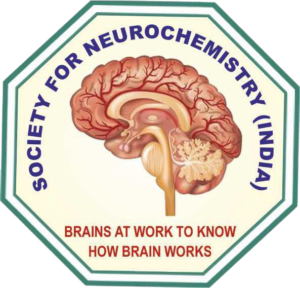The Power of Stories: From History to Modern Gaming 10-2025
Stories are fundamental to human existence, serving as a bridge between individual experience and collective memory. From ancient oral traditions to today’s digital media, storytelling has evolved but remains central to how we understand ourselves and the world around us. This article explores the transformative journey of storytelling, its influence on history and culture, and how modern mediums like video games continue this age-old tradition with new levels of interactivity and immersion.
To navigate this exploration, consider the following topics:
2. The Power of Stories in Shaping Historical Perspectives
3. Narratives as a Tool for Engagement and Learning
4. From Traditional to Interactive: The Rise of Modern Gaming
5. Case Study: Thematic Analysis of Popular Modern Games
6. The Role of Fictional Narratives in Society
7. Non-Obvious Dimensions of Storytelling
8. Future Trends in Storytelling
9. Conclusion
1. The Evolution of Storytelling from History to Modern Media
Human beings have an intrinsic need for stories, which serve to communicate values, preserve culture, and foster social cohesion. In prehistoric times, oral storytelling was the primary means of passing down knowledge — from myths explaining natural phenomena to legends of heroes. As civilizations advanced, written histories emerged, capturing stories on clay tablets, papyrus, and eventually printed books. Today, digital storytelling harnesses multimedia, interactivity, and global connectivity to create immersive experiences.
This evolution reflects not only technological progress but also shifts in how stories are experienced and shared. The significance of stories in shaping cultural identities remains constant, whether through cave paintings or virtual reality.
“Stories are the threads that weave the fabric of culture, history, and identity across generations.”
2. The Power of Stories in Shaping Historical Perspectives
History is not just a collection of dates and facts but a narrative constructed through perspectives and storytelling. Historically, dominant groups have shaped narratives to reinforce their worldview, often leading to myths that obscure or distort factual accounts. For example, the legend of the Wild West often romanticizes bounty hunters and outlaws, blending fact and fiction to create a compelling cultural myth.
Storytelling plays a critical role in preserving history; oral traditions transmit cultural knowledge across generations, especially in societies with limited written records. Modern historians analyze these narratives critically to distinguish between myth and fact, emphasizing the importance of diverse perspectives in understanding the past.
For instance, the story of the American Revolution is told from multiple viewpoints, shaping how different communities perceive their history and identity.
3. Narratives as a Tool for Engagement and Learning
Stories significantly impact our psychology, enhancing memory retention and fostering empathy. When complex scientific concepts are embedded within compelling narratives, learners are more likely to understand and remember them. Educational theorists emphasize that storytelling transforms passive reception into active engagement, making learning more effective.
Case studies demonstrate this principle. The ancient epics like Gilgamesh or The Odyssey conveyed moral lessons and cultural values through adventures and characters, much like modern documentaries use storytelling techniques to educate audiences about history or science.
Research in cognitive science shows that stories activate multiple areas of the brain, increasing emotional connection and memory encoding, which explains their enduring educational power.
4. From Traditional to Interactive: The Rise of Modern Gaming as Storytelling Medium
Video games have revolutionized storytelling by combining narrative with interactivity. Unlike passive media like movies or books, games allow players to influence the story’s outcome, fostering a sense of agency. Early titles used simple text or visuals, but contemporary games employ cinematic techniques, branching narratives, and real-time decisions.
For example, the game *Call of Juarez* immerses players in historical themes of the American Wild West, blending factual elements with fictional storytelling to create an engaging experience that educates and entertains simultaneously. Such games demonstrate how narrative depth enhances immersion and emotional engagement.
The importance of interactivity in modern storytelling lies in its ability to foster empathy and personal investment, making players active participants rather than passive observers.
5. Case Study: Thematic Analysis of Popular Modern Games
| Game Title | Theme & Cultural Influence |
|---|---|
| Hearthstone | The “Mean Streets of Gadgetzan” expansion draws on Western storytelling styles, blending humor with cultural influences in a card-based fantasy universe. |
| The Division 2 | Features narratives of rebellion and societal collapse, reflecting contemporary anxieties and the importance of community resilience. |
| Bullets And Bounty | An illustrative example of Wild West bounty hunting lore, modernized through engaging gameplay that echoes timeless themes of justice and adventure. For practical tips, many players find value in exploring game mechanics like the “quick tips: 19 paylines” available at quick tips: 19 paylines. |
6. The Role of Fictional Narratives in Shaping Perceptions of History and Society
Fictional stories often influence public perceptions of historical events, shaping collective memory and societal values. Movies, novels, and games can romanticize or vilify certain periods, affecting how audiences interpret history. While this can make history more accessible, it raises ethical questions about accuracy and influence.
For example, popular media might depict the American frontier as a lawless, heroic struggle, which simplifies complex social dynamics. Such narratives can inspire but also mislead, highlighting the need for critical engagement with entertainment media.
Balancing entertainment with educational integrity remains a challenge, but it is essential for fostering informed and critically thinking audiences.
7. Non-Obvious Dimensions of Storytelling in Gaming and Media
Beyond surface narratives, storytelling impacts game design by influencing player agency, choice, and moral dilemmas. Cultural representation and diversity are increasingly integral, allowing players from varied backgrounds to see themselves reflected in stories, fostering inclusivity.
Furthermore, immersive storytelling can affect players’ identities and worldviews. Studies show that engaging narratives can lead to greater empathy, understanding, and even shifts in personal beliefs, demonstrating the profound psychological effects of media.
8. Future Trends: The Next Frontier in Storytelling
Emerging technologies like virtual reality (VR) and augmented reality (AR) are set to revolutionize narrative experiences by providing unprecedented levels of immersion. User-generated content and community-driven narratives are also gaining prominence, allowing audiences to become active creators.
Advancements in artificial intelligence (AI) promise personalized storytelling, adapting narratives to individual preferences and interactions. These developments suggest a future where stories are not just consumed but co-created, blurring the lines between creator and audience.
9. Conclusion: The Enduring Power of Stories to Bridge Past and Present
From ancient myths to modern digital games, storytelling remains a vital force in shaping human culture. Its capacity to educate, entertain, and foster empathy ensures that stories will continue to connect us across generations.
Critical engagement with stories is essential in media literacy, enabling audiences to distinguish fact from fiction and appreciate diverse perspectives. By actively participating in shaping future narratives, we uphold the timeless power of stories to inspire understanding and unity.
As we embrace new technologies and storytelling formats, the core purpose endures: to share human experiences, bridge gaps between eras, and foster a richer understanding of our collective journey.



